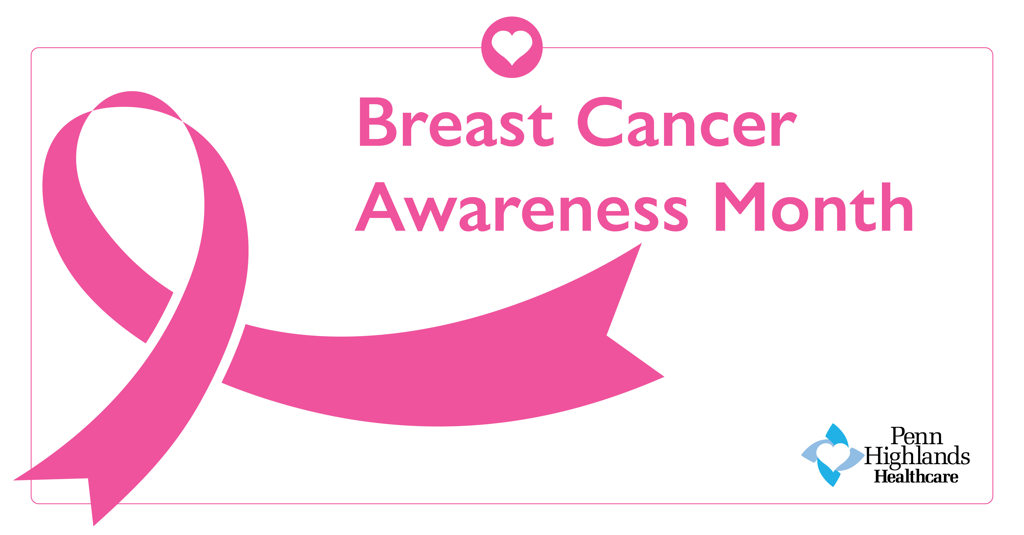
Regularly Scheduled Mammograms Could Save Your Life
About one in eight women in the U.S. will develop invasive breast cancer at some point in their lives, and except for lung cancer, the death rates are higher than any other cancer.
October is Breast Cancer Awareness Month, an opportunity to remind all women that mammograms help save lives.
While screenings can’t prevent breast cancer, they can help doctors find it as early as possible when it’s easier to treat. A mammogram can sometimes find signs of breast cancer up to three years before it can be felt, and they have helped reduce the breast cancer mortality rate in the U.S. by nearly 40% since 1990.
How do mammograms work?
A mammogram uses a safe, low-dose x-ray to take an image of the breast tissue. During the screening, you’ll stand in front of an x-ray machine and place your breast on a plastic plate. Another plate will press on the breast from above, flattening it and spreading the tissue apart. The technologist will take an image of the front and side of each breast, and the images will then be examined by a radiologist, who will look for abnormal areas in the breast, such as calcifications, masses, asymmetries and distortions. If you’ve had previous mammograms, the radiologist will also look for changes to the tissue that have occurred since your last screening.
What are the different types of mammograms?
There are two main types of mammograms: 2D and 3D. They both use the same x-ray technology, and the screening feels the same for the patient. The difference is the image clarity for the radiologist who reads the mammogram.
“Traditional breast cancer screenings utilize 2D mammography, where we take an image of the breast from the front and from the side and combine them to create a single image,” said John Mawn, MD, board-certified Breast Radiologist and fellowship trained in women’s imaging, specifically breast imaging, who practices at Penn Highlands Healthcare. “The other method is 3D mammograms which take many more images of the breast from a variety of angles to build a 3D-like image. This enables radiologists to see tissue in one-millimeter slices, providing a more detailed look.”
“Two-dimensional mammography is still a gold standard and is indicated for routine screenings,” said Suzanne Iorfido, DO, a Breast Radiologist who specializes in breast imaging and intervention with Penn Highlands Healthcare. “It is an excellent tool for detecting abnormalities.”
What age should I start scheduling mammograms?
The American College of Radiology (ACR) and Society of Breast Imaging (SBI) guidelines recommend that women begin screening mammograms at age 40 or sooner if they are experiencing a problem or have a strong family history of breast cancer.
According to the ACR, women who do not begin annual mammograms starting at age 40, increase their chances of dying from breast cancer and the likelihood they will experience more extensive treatment for any cancers found.
What about self-examinations?
Regularly examining your breasts on your own can also be an important part of early detection.
“The more familiar you are with your own breasts, the more likely you’ll be able to notice a change and report it to your doctor,” said Natalie Furgiuele, MD, a breast surgeon with Penn Highlands Healthcare in Southwestern Pennsylvania. “A woman’s breast health should include three important exams — monthly self exams, an annual mammogram and a clinical breast exam performed annually by her health care provider.”
Dr. Furgiuele continued, “To perform the most effective self-examination, ask your healthcare provider for a demonstration. And all women, especially those 40 years and older, should talk to their primary care provider about setting up a mammogram screening schedule that’s right for you.”
Penn Highlands Healthcare offers state-of-the-art mammogram technology in private and comfortable settings at its hospitals as well as at community medical buildings in Northwestern/Central and Southwestern Pennsylvania. To learn about the services near you, visit www.phhealthcare.org/pink.
